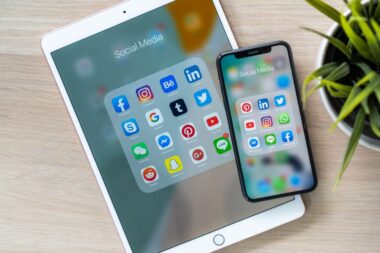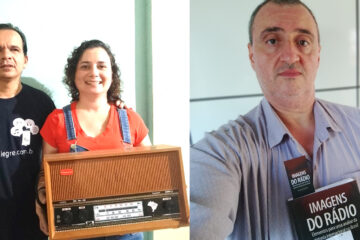We live in a world in constant transformation, be it social, economic, technological or emotional. New generations already grow with technology in their lives. Children still in diapers already see drawings on their smartphones. Others 5 years old, for example, already master the new technologies. These behaviors bring important losses in the psychological aspect of infants.
Seeing these and many other transformations that the world is experiencing, we decided during this month and probably in the next to reformulate our web page with the insertion of new audios, of the daily programs.
We intend to create a space where our listeners can request their Bible course to be sent by correspondence. These courses can also be taken on the website itself, by downloading the lessons in PDF format and later on the exercises on the page itself. In addition to these options, there will be the possibility for the listener to schedule a Bible course with one of our collaborators, through online meetings.
Another idea under development is the creation and insertion of an App on the Appstore and Playstore platforms. However, our focus now is to work on redesigning our website, but as soon as it is ready, we will shift the focus to the second part, which is the creation of this App.
As well as on our website, our goal is to offer Bible courses within the school. The ease with which people have access to smartphones and the time spent with them encourage us to invest in this new segment.
The truth is that in Brazil thousands of young people and adults have been turning off their televisions and spending more and more time on their cell phones. Pay TV’s have never lost so many of their customers as they do now. It is probably a worldwide trend and in Brazil it is no different. The migration to streaming video platforms has been growing and the use of cell phones to watch this content is increasing.
 A report by Jovem Pan Notícias recently published:
A report by Jovem Pan Notícias recently published:
The attentive looks at the cell phone delivery in the Brazilian’s behavior. Streaming services have grown a lot in the country. Low cost and autonomy contributed to the migration of pay-TV customers to online platforms
The Covid 19 pandemic helped increase the number of subscribers to streaming. To give you an idea, a survey conducted by Conviva, a company specialized in integrated data intelligence, found that only at the beginning of the pandemic, in March 2020, streaming services had already grown 20%. In Latin America, the numbers also jumped 26.6% in the same period. Video playback from 10 am to 5 pm increased by 40%. It seems that the world of technology has invaded the country for good.
This is the new trend and still within our implementations to increase our reach. In May we made two live broadcasts, the first focusing on this pandemic period, reminding people that there is hope and that God is in control. This live was made with the participation of the doctor and evangelist from São Paulo, Allen Dutton Jr, son of Allen Dutton who was one of the first missionaries in Brazil. With this live, we got more than 130 views, more than 480 engagements and 130 people reached.
The second Live was held at the end of the month and included the participation of Isabel Dante, a psychologist and my wife. She has been working with anxiety for a few months, helping many families in their care. We also reached great numbers, we had more than 282 views, more than 490 engagements and 165 people reached. These numbers represent only one day in the air.
We realized in our Lives that the strong point is often not even during the transmission itself, but afterwards with a lot of post streaming accesses. This is very curious and interesting to note.
Finally, we cannot in any way stop sending our transmissions via shortwave, because it is the means that regardless of the internet and access, it will be there. Our shortwave work has a worldwide reach and reaches where the internet has not yet reached yet, giving these listeners a unique opportunity.
Neila Del Bianco says on the UNB website (University of Brasilia):
However, the radio is, above all, resilient. It transforms technical limitations of unisensoriality into forces. It is through the power of the oral cultural tradition that it has become the medium of affection. As McLuhan (1995) said, radio affects people in depth, offering an experience that is both private and collective, rooted in everyday cultural practices. Like listening to the morning news, talking on the phone with your favorite communicator on a wide range of topics, or just enjoying music while you’re in traffic.
Palavra Alegre – Frequency pix
The radio is something that can be transported, it does not require data transmission or internet bandwidth, and it is free of cost. Technological accessibility and low production costs made it popular and preferred by activists and popular movements.
In Brazil, it reaches 89% of the population in the main metropolitan regions, equivalent to 52 million people. On average, people spend 4 hours, 36 minutes daily tuned in to a broadcaster, which represents about 20% of their day, according to a 2017 Kantar IBOPE Media survey.
Therefore, the diversity is immense and needs all the opportunities that are offered to us to spread the gospel of Jesus’ salvation. God bless you all!
“How can a young man cleanse his way? By taking heed according to Your word.” Psalm 119:9 NKJV

